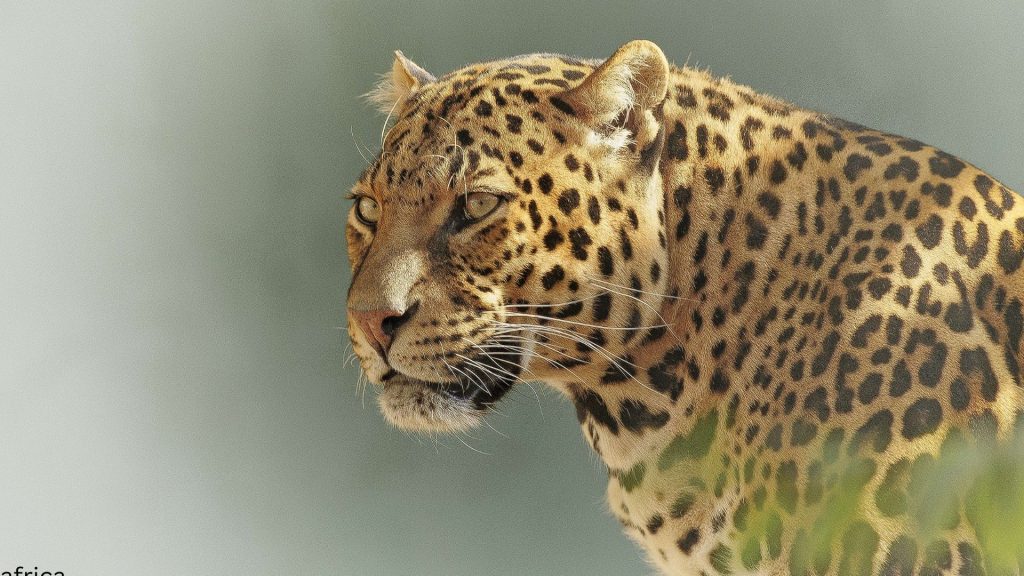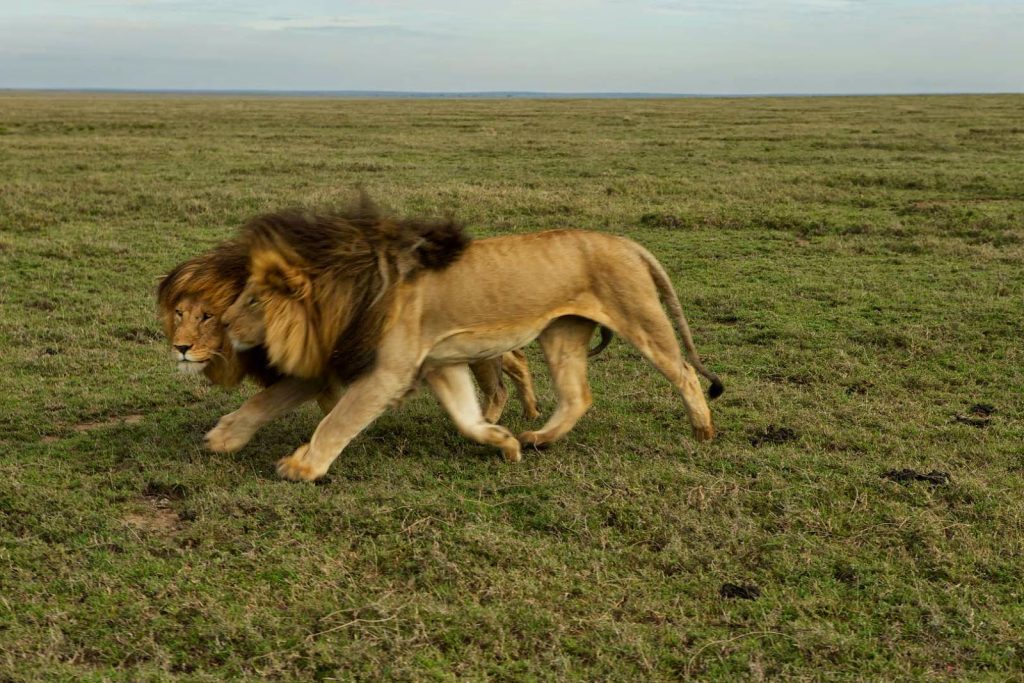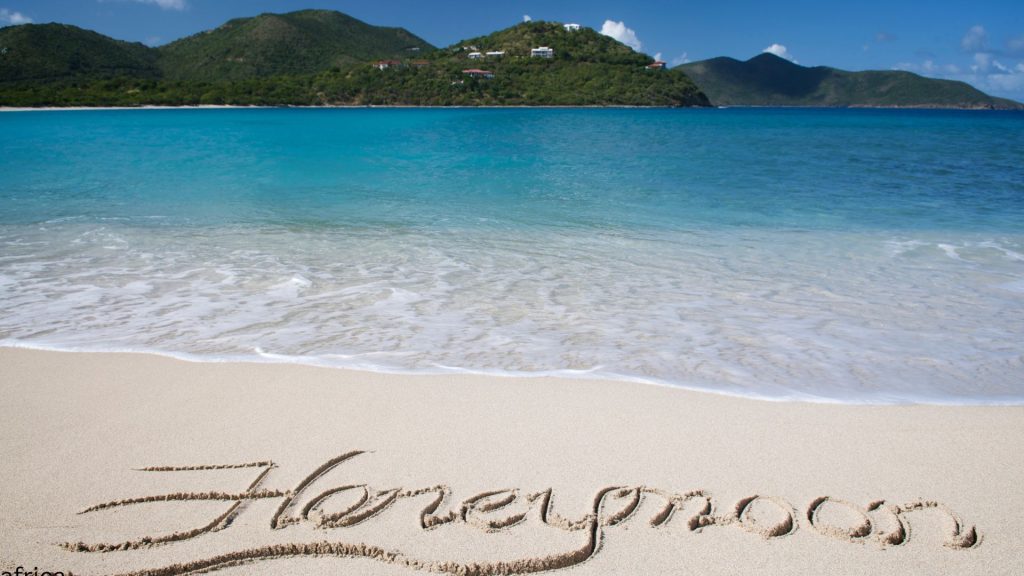Tanzania Safari in September
- Home
- Tanzania Safari in September
Tanzania Safari in September
Home » Tanzania Safari in September
Tanzania in September
September is the fourth month of the dry season, and it’s an excellent month to travel to Tanzania to enjoy a safari combined with a mountain trek or beach retreat to Zanzibar. The dry season offers perfect wildlife viewing conditions as the dry landscapes force the animals to stay near permanent water sources, and sparse vegetation makes spotting the wildlife easier. Dry weather also creates ideal conditions to trek Mount Kilimanjaro or the wilder Mount Meru.
While at the coast, perfect temperatures offer the ideal weather for a beach retreat – a perfect way to conclude a safari. During the dry season, peak prices apply. If you want to travel to Tanzania in September, you should book one year in advance. Below, we provide tips on how to enjoy a more secluded experience and save money.
September is an ideal time for game spotting, as the dry season attracts a lot of wildlife around remaining water sources so you know where to head to view wildlife. Check out our safari guide, Tanzania Safaris: North vs South, to find out more about the more popular northern circuit, where you can witness the great migration during river crossings in the Lamai/Kogatende region of the Serengeti National Park
Tanzania Weather in September
Tanzania’s location near the equator results in a tropical climate where summer and winter seasons are replaced by two rainy and two dry seasons.
September is the fourth month of the dry season, which runs from June to the end of October. During these five months, the likelihood of rain is minimal throughout Tanzania, making it an ideal period for safaris, treks, and beach vacations.
Temperatures in Tanzania in September vary depending on the region and altitude. Generally speaking, southern Tanzania is hotter than the north, while the coastal areas experience the highest temperatures. In June, which marks the start of the dry season, temperatures are at their lowest, yet still warm, owing to the tropical climate. As the months go by, temperatures gradually rise. By September, temperatures are pleasant. However, morning game drives may feel chilly, so it’s a good idea to wear a warm layer to stay comfortable.
At altitude, temperatures and rainfall can vary, so be prepared for temperatures to be ten degrees lower. Moreover, during the night, temperatures can plummet to zero, so it is worth packing multiple thin layers that you can take off as the mornings quickly warm up.
Average temperature in Tanzania in September
Tanzania’s tropical climate results in consistently warm temperatures year-round. However, variations occur according to location and altitude. In Tanzania in September, the average maximum temperatures range from 24°C (75°F) to 30°C (86°F). In southern parks and coastal regions, temperatures range from 28°C (82°F) to 30°C (86°F). Meanwhile, the temperatures in the north vary between 24°C (75°F) and 26°C (78°F). During September in Tanzania, warm clothes are necessary due to the cold evenings and mornings.
Is September a good month for a safari in Tanzania?
September is an excellent month for a safari in Tanzania. The superb weather creates ideal conditions for being in the wilderness. Moreover, the drying landscapes and sparse vegetation make wildlife viewing much easier, enabling you to see high concentrations of animals and birds. However, September is a busy period, especially in northern Tanzania. So, if you prefer a secluded experience, we offer some alternative suggestions below.
Tanzania’s safari destinations are split into three circuits: the north, south, and west. The north has UNESCO World Heritage Sites, including Ngorongoro Crater and the Serengeti National Park, and other gems like Tarangire National Park, home to one of Tanzania’s largest populations of elephants. It is Tanzania’s most famous circuit, and bookings for September should be made about one year in advance.
The southern circuit is highly underrated, with world-class parks home to large populations of big cats and herds of elephants. It is also the meeting place of fauna and flora of Eastern and Southern Africa, increasing the numbers of already abundant species. Due to the parks’ vast size, it is possible to enjoy a secluded safari, even during the high season. Consequently, Nyerere National Park and Ruaha National Park offer remote safaris you can enjoy on foot, by boat, or even by hot air balloon.
The western circuit is even more remote, with fly-in destinations such as Katavi National Park and Mahale Mountains National Park, where unique experiences far from the crowds are guaranteed even during the high season.
Is September a good time to visit Tanzania?
Thanks to ideal wildlife spotting conditions and weather, September is an excellent month to visit Tanzania for a trek, safari, and beach getaway. However, September is the high season with peak prices, and the northern safari circuit can feel busy. Nonetheless, you can leave the world behind by choosing a safari on the southern or western circuits, where vast African wildernesses await.
Regardless of which circuit you choose, you are guaranteed excellent experiences thanks to Tanzania’s high concentrations of wildlife. However, booking a year in advance is advisable. Contact our country experts for a no-obligation conversation, and they can help make your dream experience come true.
What is the cost of visiting Tanzania in September?
September is the high season, and higher prices apply. It is undoubtedly one of the best months to visit, and below, we share some tips on how to save even during the high season. Alternatively, consider the shoulder season from November to mid-December and January to mid-March for a slightly cheaper experience.
As Tanzania is a vast country, 2.6 times larger than Germany, it is easy to underestimate the time required to drive between parks. To avoid feeling rushed and allow you to savour this experience, we recommend budgeting for a minimum of seven to ten days.
Here are a few ways to save. Firstly, you can mix up your accommodation types throughout your stay. For example, you could spend a few nights in a beautiful lodge, followed by a few nights of Adventure Camping in public campsites. For a balanced experience, consider Mobile Explorer Camps in private campsites while enjoying creature comforts, such as comfortable beds and hot showers. Another way to save is to choose accommodation options outside national parks, allowing you to avoid paying park fees.
Secondly, you can choose a private or group safari. Private safaris can be cost-effective depending on the number of people in your group. They also allow you to select your dates, destinations, and travel companions, making them perfect for honeymooners, families, birdwatchers, or photographers. On the other hand, group safaris have scheduled dates and itineraries but offer the opportunity to share costs with like-minded people, which is ideal if you are travelling alone or as a couple. Tanzania-Experience group safaris are limited to a maximum of seven guests, guaranteeing a window seat in a 4X4 vehicle.
Why Visit Tanzania in September?
Tanzania, in September, offers tremendous travel experiences without the crowds or expenses found earlier in peak season, ideal for witnessing wildlife migrations, trekking adventures, and cultural immersion. Below are some reasons as to why you should plan your Tanzania trip in September.
Wildlife spotting: September brings prime game viewing as water scarcity prompts over a million wildebeest, zebra, and antelope species to migrate through Serengeti towards the Mara River. Witness the planet’s greatest spectacle of survival as thousands plunge across crocodile-infested waters. Meanwhile, Ngorongoro and Tarangire are teeming with thirsty big five crowding around watering holes.
Ideal outdoor conditions: With moderately warm days, bone-dry air, and little rainfall, September offers ideal outdoor conditions for unparalleled Tanzanian adventures. Game drives are comfortable, but bring layers as nights turn cooler. The lack of rain brings excellent visibility, too, for capturing iconic landscapes.
Fewer crowds: Being after peak season, tourist crowds start thinning out from September. Safaris regain their remote feel, and competitive lodging rates emerge. Solo travelers benefit from a calmer, exclusive adventure.
Best trekking conditions: Clear skies, moderate temperatures, and minimal rainfall make September ideal for summit attempts up Kilimanjaro, Meru, and in Ngorongoro’s montane forests. With conditions akin to peak trekking season but with fewer other hikers, September brings opportunities galore for those seeking rugged challenges.
- Relax on the beaches of Zanzibar: September is a great time to enjoy the beaches of Tanzania. The temperatures are generally warm, and the humidity levels are low, creating the perfect condition for a beach vacation on Zanzibar island, where you can find some of the best beaches to relax and unwind. Go beach hopping on a boat and try your hand at snorkeling, diving, paddle boarding, and scuba diving.
What to wear in Tanzania in September
Here are some tips on what to pack for a visit to Tanzania in September:
- Pack clothing with long sleeves and trousers to protect from the sun and insect bites.
- Avoid brightly coloured clothing, as well as camouflage, dark blue and black.
- Pack warm clothes for early morning game drives.
- Pack sun protection like hats and shades.
- Bring a small bag for binoculars, a guidebook, water, and snacks.
- Pack closed shoes for game drives and sitting around the campfire at night.
- Bring a swimsuit to dip in one of the lodge pools.
- Pack something smart to enjoy a classic safari dinner.
- If Zanzibar is on your itinerary, include clothes that can cover your shoulders and knees when visiting public places.



